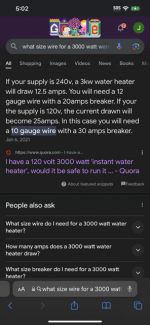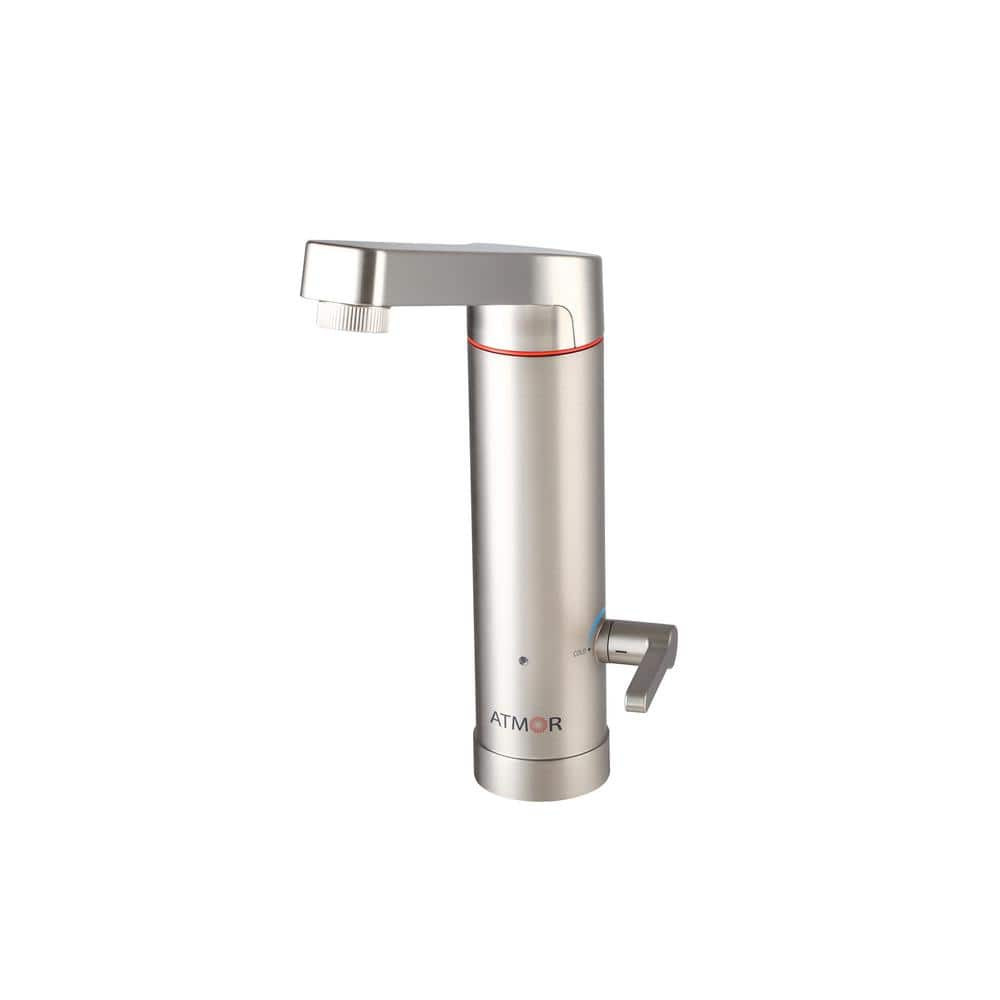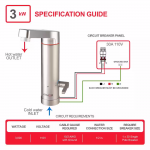Jpflex
Electrician big leagues
- Location
- Victorville
- Occupation
- Electrician commercial and residential
If you google what the size breaker and wire should be for a water heater 120 gallon or less at 3,000 watts at 120 volts
You get answers ranging from 12 AWG wire and and 25 ampere breaker to 10 AWG wire and 30 ampere breaker
However, is 240.4 D OCPD rule for small conductors not applying or are inspectors not enforcing this?
Unless specifically permitted in 240.4(E) (taps) or (G) (specific applications water heaters not listed),
the overcurrent protection shall not exceed that required by 240.4(D)(1)through (D)(8) after any correction factors for ambient temperature and number of conductors have been applied.
We’re getting online advise to install either a 12 AWG or 10 AWG wire with a 30 ampere breaker for this 3,000 watt 120 volt water heater
3,000 / 120 = 25 i ( this is where online experts stop) using a 12 AWG or 10 AWG wire
However, wouldn’t it be properly calculated at 25 i x 1.25 (continuous load) = 31.25 i amperes MINIMUM
Answer #8 AWG wire at 75 degrees Celcius good for 50 i amperes and not subject to small conductor rule 240.4 D?
OCPD = 35 i ampere standard breaker minimum
You get answers ranging from 12 AWG wire and and 25 ampere breaker to 10 AWG wire and 30 ampere breaker
However, is 240.4 D OCPD rule for small conductors not applying or are inspectors not enforcing this?
Unless specifically permitted in 240.4(E) (taps) or (G) (specific applications water heaters not listed),
the overcurrent protection shall not exceed that required by 240.4(D)(1)through (D)(8) after any correction factors for ambient temperature and number of conductors have been applied.
We’re getting online advise to install either a 12 AWG or 10 AWG wire with a 30 ampere breaker for this 3,000 watt 120 volt water heater
3,000 / 120 = 25 i ( this is where online experts stop) using a 12 AWG or 10 AWG wire
However, wouldn’t it be properly calculated at 25 i x 1.25 (continuous load) = 31.25 i amperes MINIMUM
Answer #8 AWG wire at 75 degrees Celcius good for 50 i amperes and not subject to small conductor rule 240.4 D?
OCPD = 35 i ampere standard breaker minimum




